La Casa Della Falsita
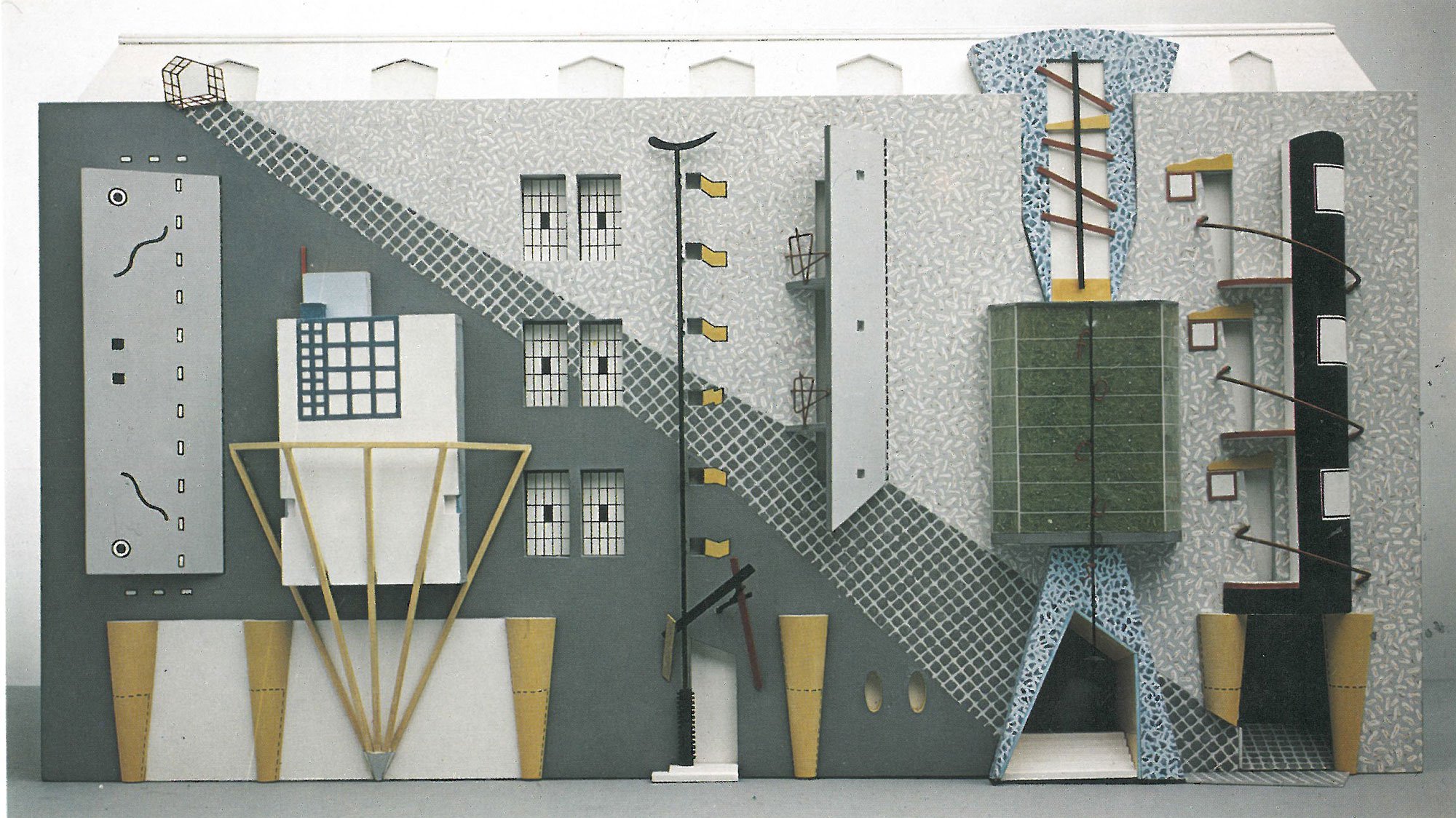
The 1982 ‘Casa Della Falsita’ exhibition was decidedly under the English architectural radar. Held in Munich at the Focus Furniture Gallery, the inspiration for the show was the result of a squabble with municipality, after the shop owner, Peter Pfeiffer, was denied planning permission to build a spiral staircase between his store and the basement. Frustrated but unthwarted, Pfeiffer and his wife decided to find another way to work with the space and invited 11 architects to freely transform the whole building, but this time through drawings and models.
The participants represented a trans-European, neo-avant-garde grouping, one that perhaps even signalled a paradigm shift endemic to the early 1980s. This was a time when postmodernism (the Jencks/Graves/Mickey Mouse variety) was on the ascendancy in the architectural world. Elsewhere were the other postmodernisms; Lyotard’s absent grand-narratives and Derrida’s abandonment of ordering (a deconstruction of Western Metaphysics). It was also the heyday of Rossian rationalism, following the first-ever Architecture Biennale of 1980, ‘Presence of the Past’, in which I, at a fledgling 30, was the youngest exhibitor.
The preceding decade had witnessed a polarisation between Architettura Radicale (being of the AA group, these were our heroes) and Rationalism (favoured by the 9H and Chipperfield contingents up the road). Curiously, a number of the participants in the exhibition were re-formattings of the leading lights of Architettura Radicale. Alessandro Mendini had edited both Casabella and Domus, husbanding the contemporary discourse from radicale political provocation and disengagement strategies up to the early years of Milan Style, which was about to emerge. The cover of Mendini’s last issue of Casabella in 1976 featured the ‘Ruined Temple of Consumerism’ from my and Jeanne Sillett’s Dorset Project. This was our AA diploma thesis, now in the AA archives. After founding Archizoom in the 1970s, Andrea Branzi used the Falsita show to move his visionary No-Stop City thesis of liquid modernism into the horticultural (a state that does not possess its own form but flows and grows into an operative void – in this case, the Falsita house on Leopoldstrasse in Munich).
The whole Falsita show was orchestrated by Studio Alchymia (Piercarlo Bontempi, Bruno Gregori and Alesandro Guerriero) who with their playful iconoclasm were chipping away at the seriosita of the Italian rational discourse (ie, super-cool). With Pfeiffer they identified the theme – the house of lies – and for their own submission, they proposed an internal forest of slim emblematic columns. Haus-Rucker-Co, old hands of the 1960s Austrian branch of Architettura Radicale, were also there, suggesting a blackhouse/whitehouse juxtaposition. Stefan Wewerka, rogue Team Ten member, was the only German participant. Like his furniture, he caused the Munich house to lean, blown out of plumb by the storm of the zeitgeist. Also on the Falsita list was the Dutch group Opera, which had just restored J J P Oud’s Rotterdam Café de Unie; Trix and Robert Haussmann from Zurich; Robert Maria Stieg from Vienna; and Bruno Minardi, who hailed from the Rossi school in Venice but had the habit of hanging out with the Alchymia crowd. All of these provocative proposals were Pfeiffer’s revenge on recalcitrant planning officials.
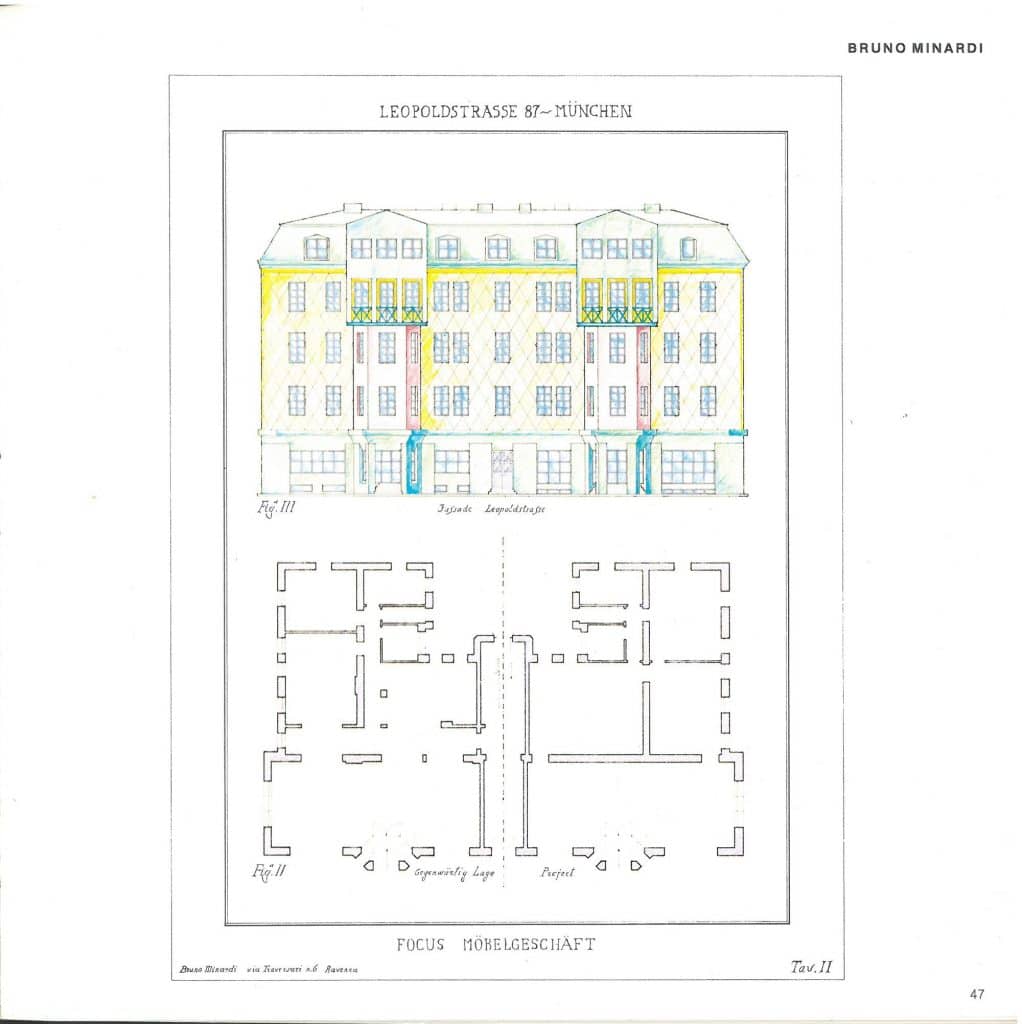
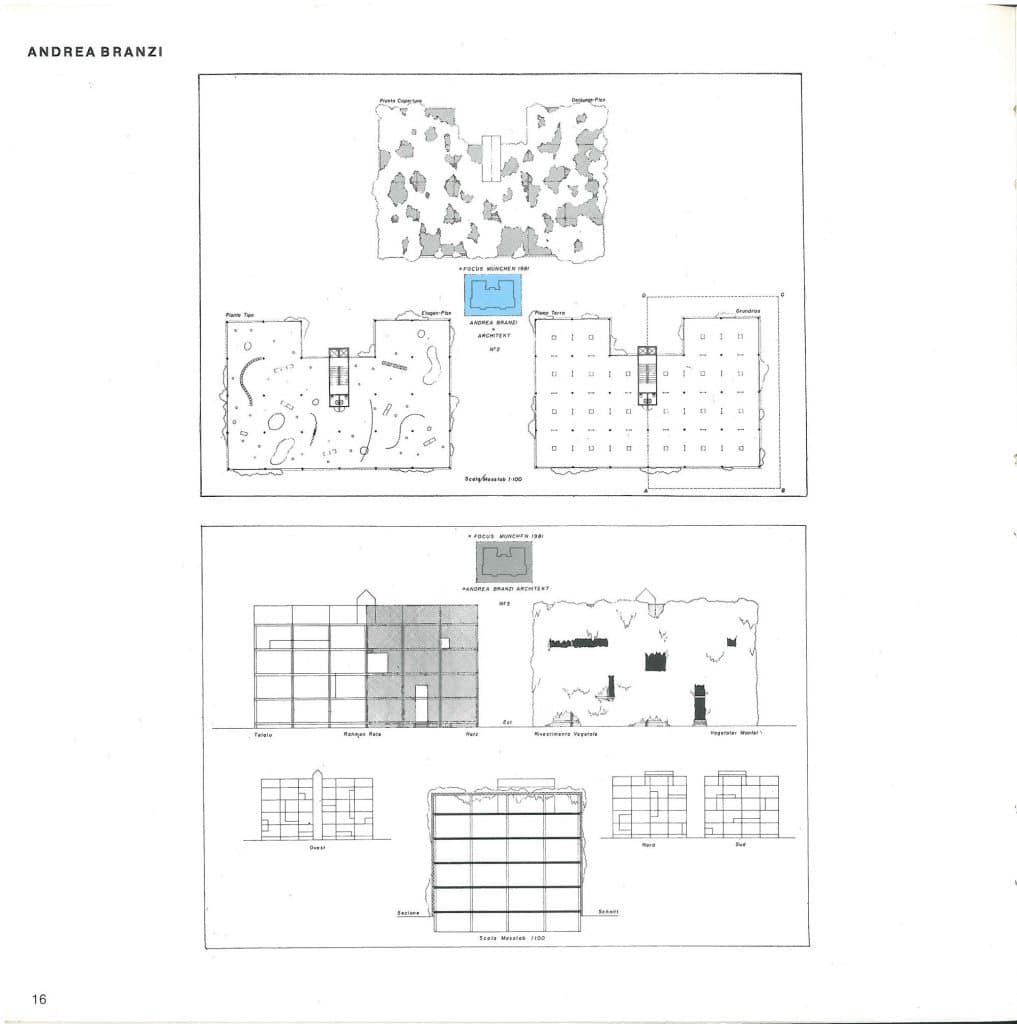
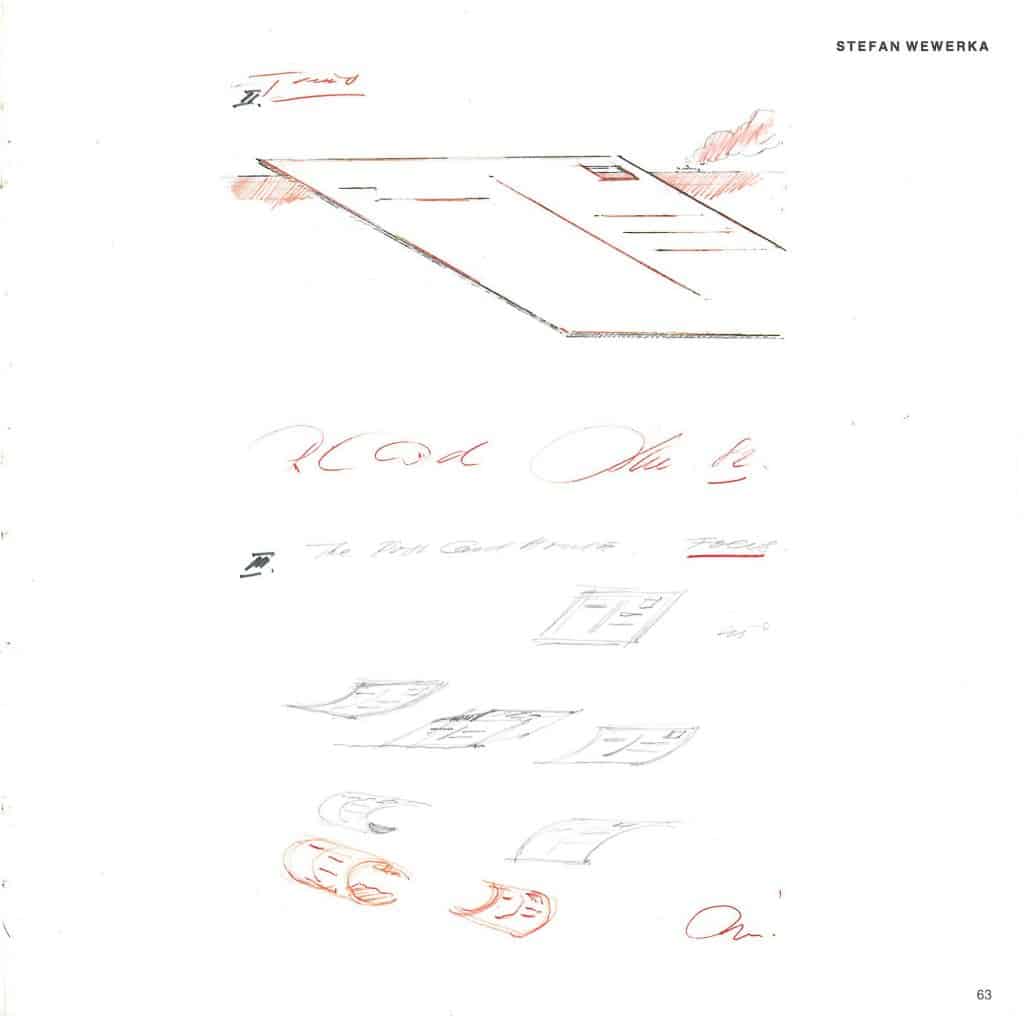
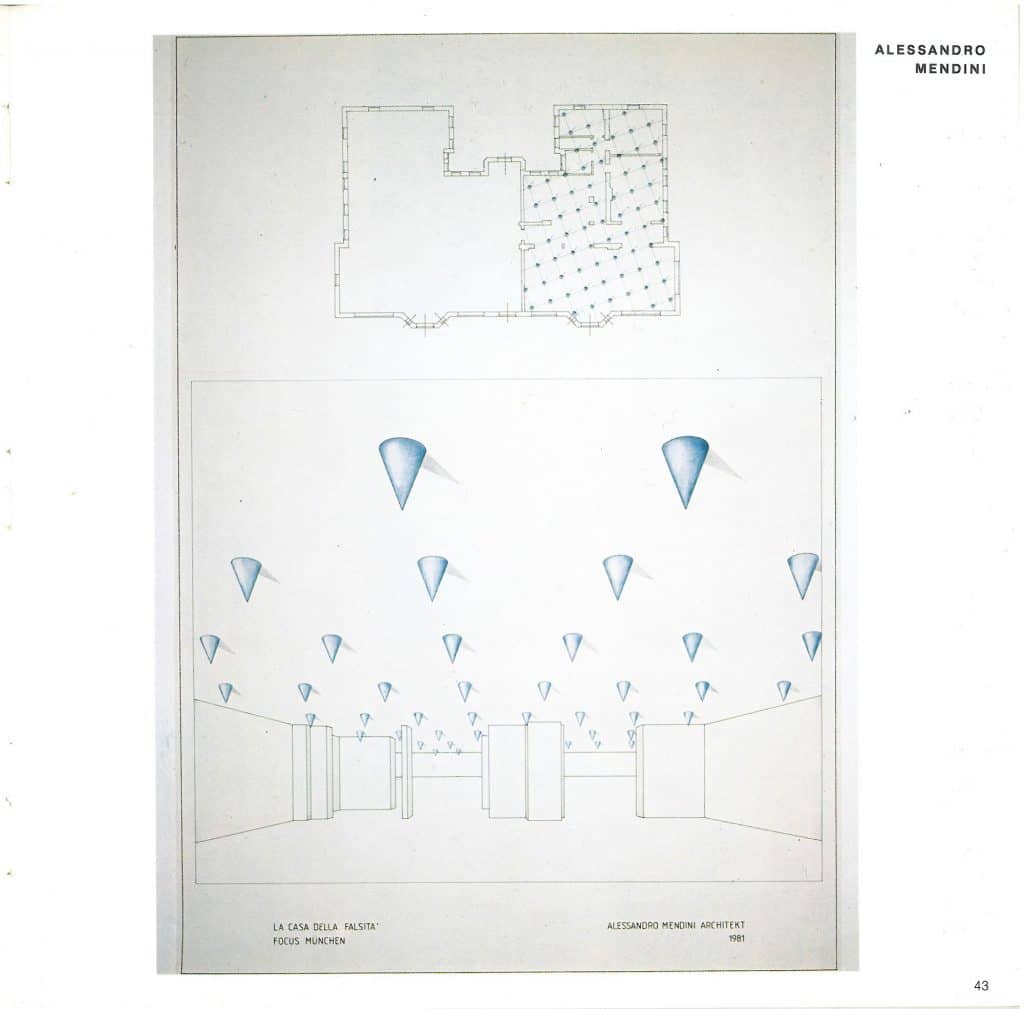
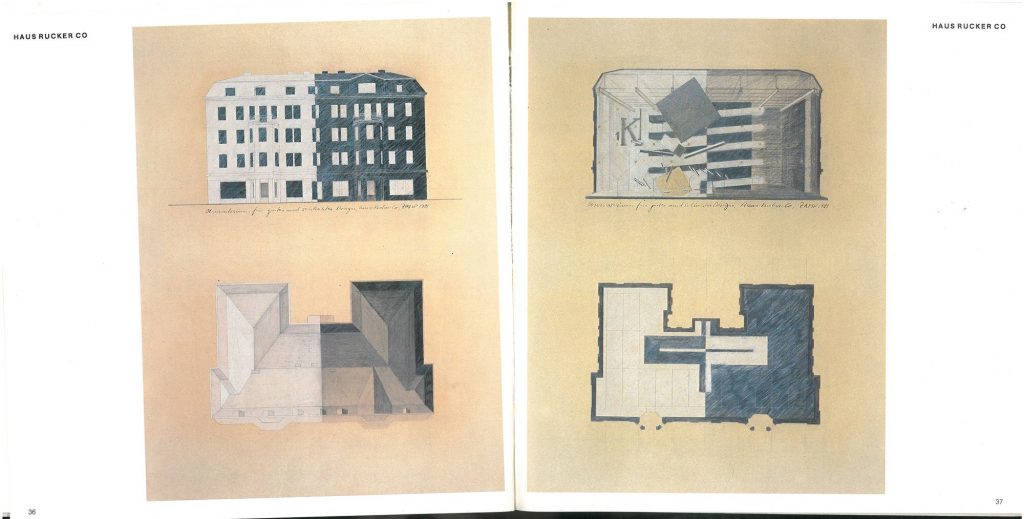
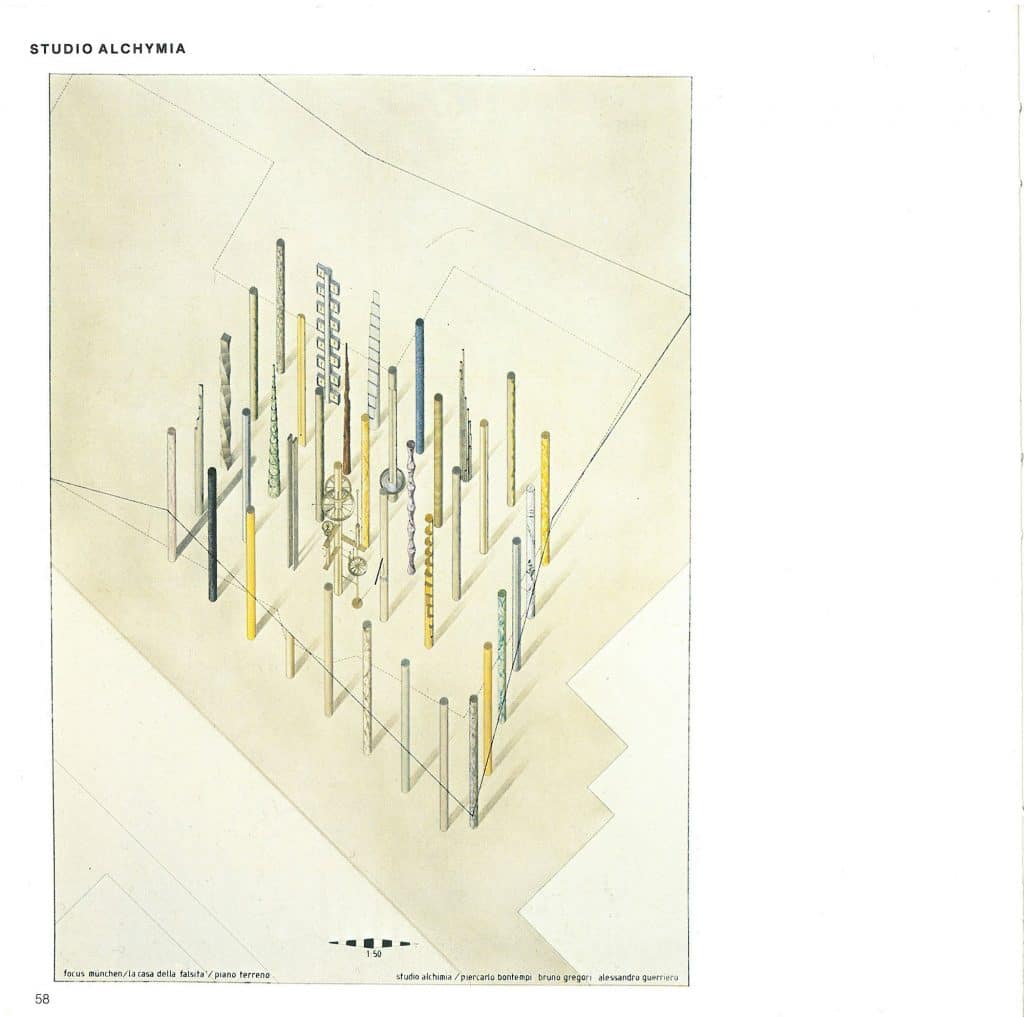
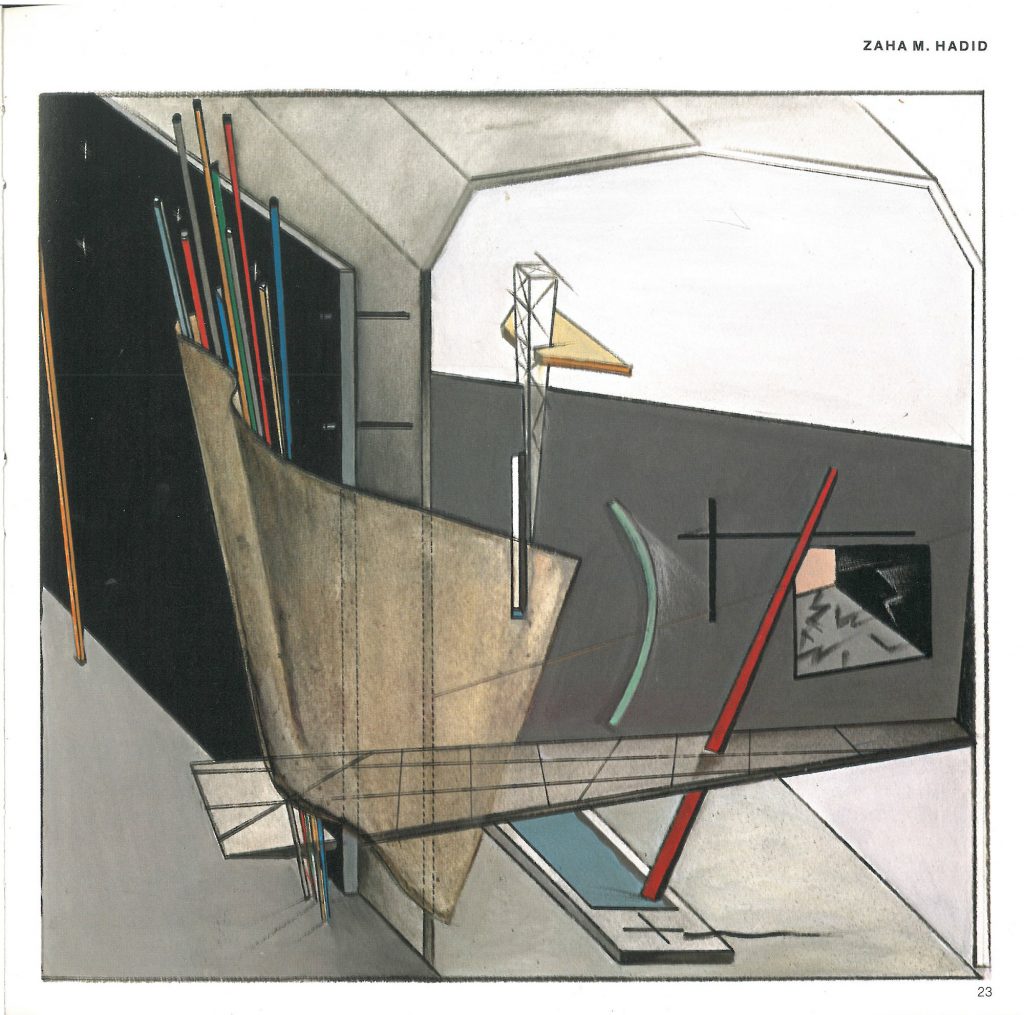
Concluding the line-up was the London camp: Zaha and myself, both Diploma Unit Masters at the AA. She was one year away from her rocket to fame – the Hong Kong Peak win. With the new decade, I was trying to move on from the heavy pencil-shaded drawings I had made in the 1970s – a technique that had been adopted (or appropriated or stolen) as house style by the AA Unit of Dalibor Vesely and Mohsen Mostafavi.
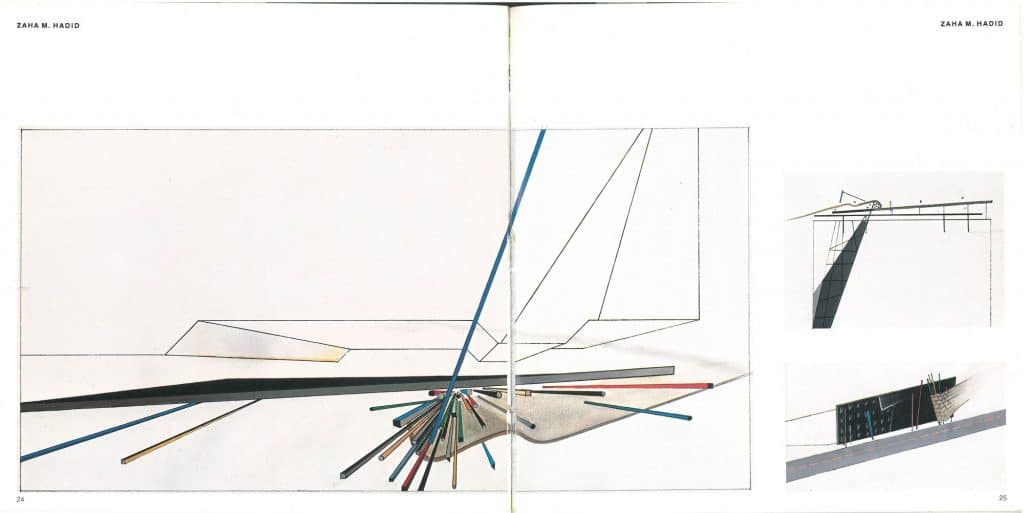
Zaha’s Casa Della Falsita drawings were small, precise explosions (what Kenneth Frampton termed ‘Sufic Script’), which she drew herself in her little house in Kynance Mews. This was before armies of assistants painted her mega-scale deconstruction topographies, and before she was colonised by ‘parapatrik’. It was hand-of-the-author stuff, unplugged Zaha. The precise perspectival geometries of her four drawings were about rupture, fracture, disequilibrium, instability – a black screen masked the existing building, a clustered clutch of multicoloured cocktail sticks intimated structure, bandaged by a stone-like swathe of cloth (ambiguously appearing from, or disappearing to, stage right). There was also a top-down perspective: did the visionary Zaha anticipate drones, or was this just her anti-gravitational, Suprematist perception? We will never know, which makes this a good point to move on to my own contribution, now held in the collection of Drawing Matter.
Accompanying the drawings in the show’s catalogue is a mugshot from a South Kensington photo-booth. It presents a moustachioed me in a tweed overcoat, check shirt and knitted tie with a Tyrolean hat pulled firmly over my pale bonce. This was not an offbeat London mode, but rather the architect in Middle-European guise, dressed to walk the streets of Munich. Julia Bolles and I had just formed BOLLES+WILSON.
I remember being taken by the idea of the false house, not least for its proximity, homonymically, to Terragni’s Casa del Fascio. I had by then also spent some time pursuing the concept of architecture parlante, and it seemed logical that if architecture could speak, whether in terms of fascism or French revolutionary architecture (Ledoux), then it could also lie. This linguistic capacity was a return to the emblematic, exiled by modernism but now re-legitimised as a new figuration (with New Wild Painting in the 1980s). To this rhetorical end, individual window groups on my Leopoldstrasse facade chatter in different languages. Some speak in high modern, others whimper ‘we are not windows; we are flags’. Another, communicated to the exhibition model-maker as ‘grass in glass’, mutated to ‘lawn in lantern’. Six more windows mutely accept their morose fate in a traditional rectangular gridded format. In total, this facade of window languages adds up to post-Babel chatter – the linguistic turn of the 1980s.
The two drawings which describe this facade of linguistic confusion are stitched together by a grey band labelled at one end ‘la Casa Falsa’. This little 2D projection of a 3D house silhouette is to be found balanced on top of the street facade. From here a perspectival street is drawn diagonally across the front of the building, hitting the pavement at the shop entrance and folding back (optical falsification) into the furniture showroom where existing columns are enclosed and masked by a pavilion, labelled ‘la Casa Corretta’.
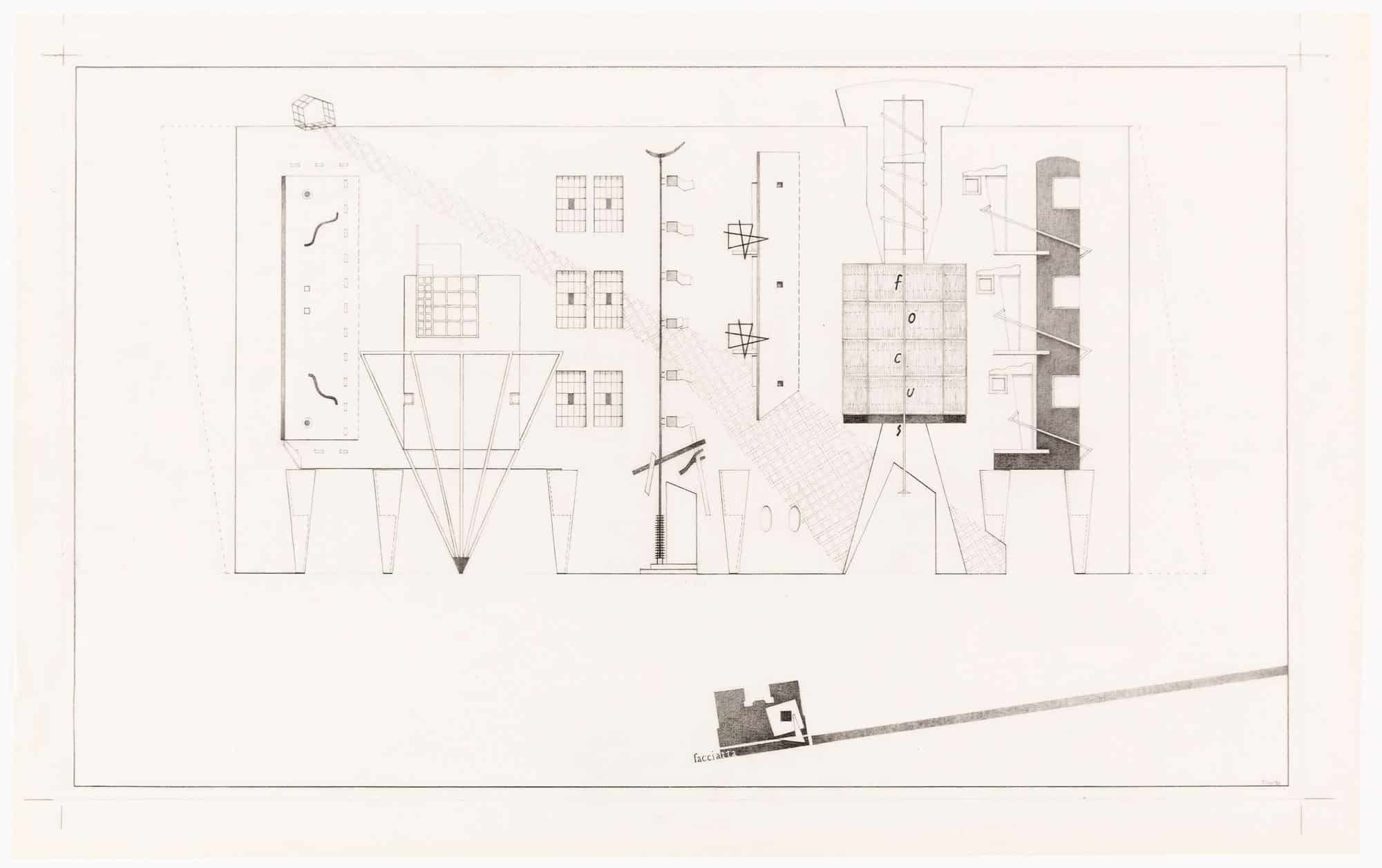
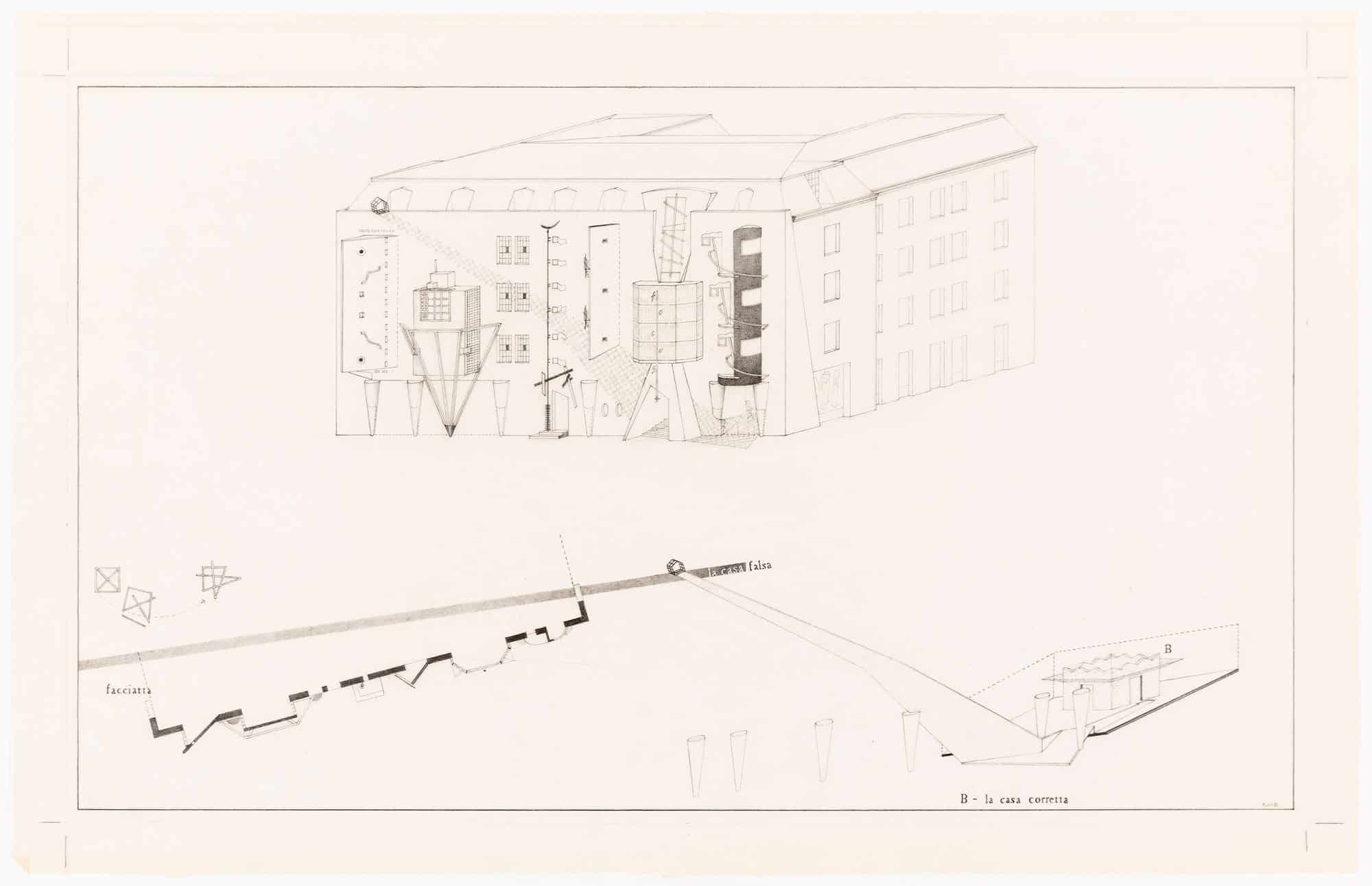
My second two drawings add a veil of pragmatism to the fictive facade scenario outlined above. They suggest a re-conceptualising, a reconfiguration of the Focus shop itself where a perfectly square salon is slightly rotated inside the thick nineteenth-century walls of the building’s plan.
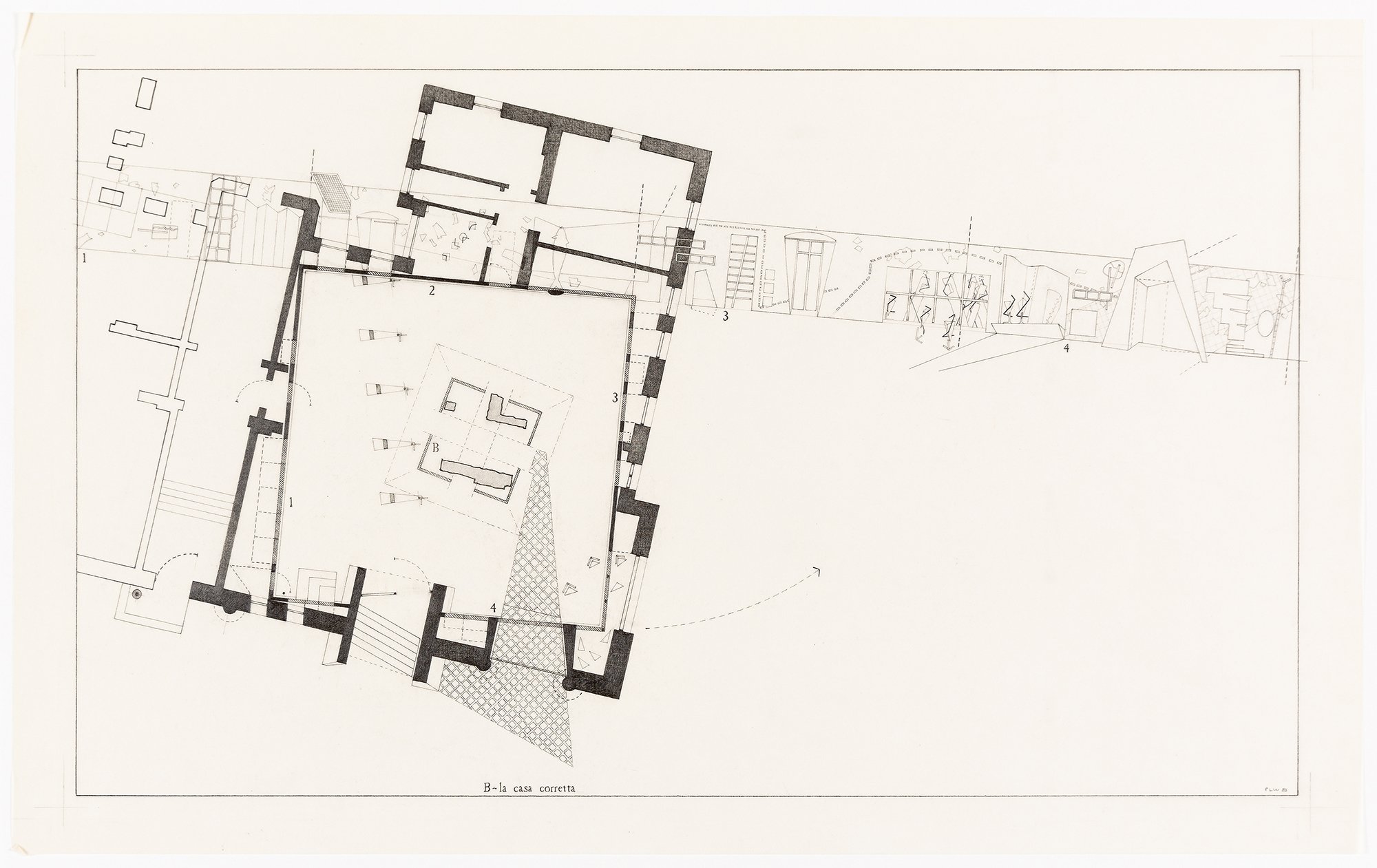

This move engenders in-between spaces (poché), furniture display niches wedged in the gap between new and old walls. These are in turn populated with another linguistic cacophony, this time not windows but figurative furniture. After a number of years of abstracted graphic research, such domestic experiments were for a few of us in the inner AA circle a technique to reconnect with both the physical and the material. It was not so much their usefulness as their formal and rhetorical unfamiliarity – their questioning of convention – that conferred agency on such furniture experiments, four of which are marshalled at the bottom of the final page. The third of these is a triangular column I had recently built in Amsterdam’s Van Rooy Gallery. There, Julia had made a costume for the gallerist with the same surface pattern (white X’s) as the column itself – figure/object ambiguity.
Each of the four Falsita drawings were originally made on A2, etched into thin tracing paper with sharp pencil lines. The exhibited prints in Munich were coloured by hand using Derwent Cumberland pencils.

Notes
Postscript: My collaborations with Alchymia continued sporadically throughout the 1980s with publications, workshops and even some over-expressive bookish furniture designs. In 2005, after BOLLES+WILSON had won the Milan BEIC Library competition, Sandro Guerriero included me in his Milan Dressing Ourselves exhibition, held in Muzio’s Triennale building. There, each participant was modelled in wax, a doppelgänger wearing a costume designed by the original: Mannequin Mendini, Dummy Will Alsop, Marzipan Sottsass and even a UN Studio costume made entirely of coloured zippers (with an all-over risk of painful zipper accidents).
